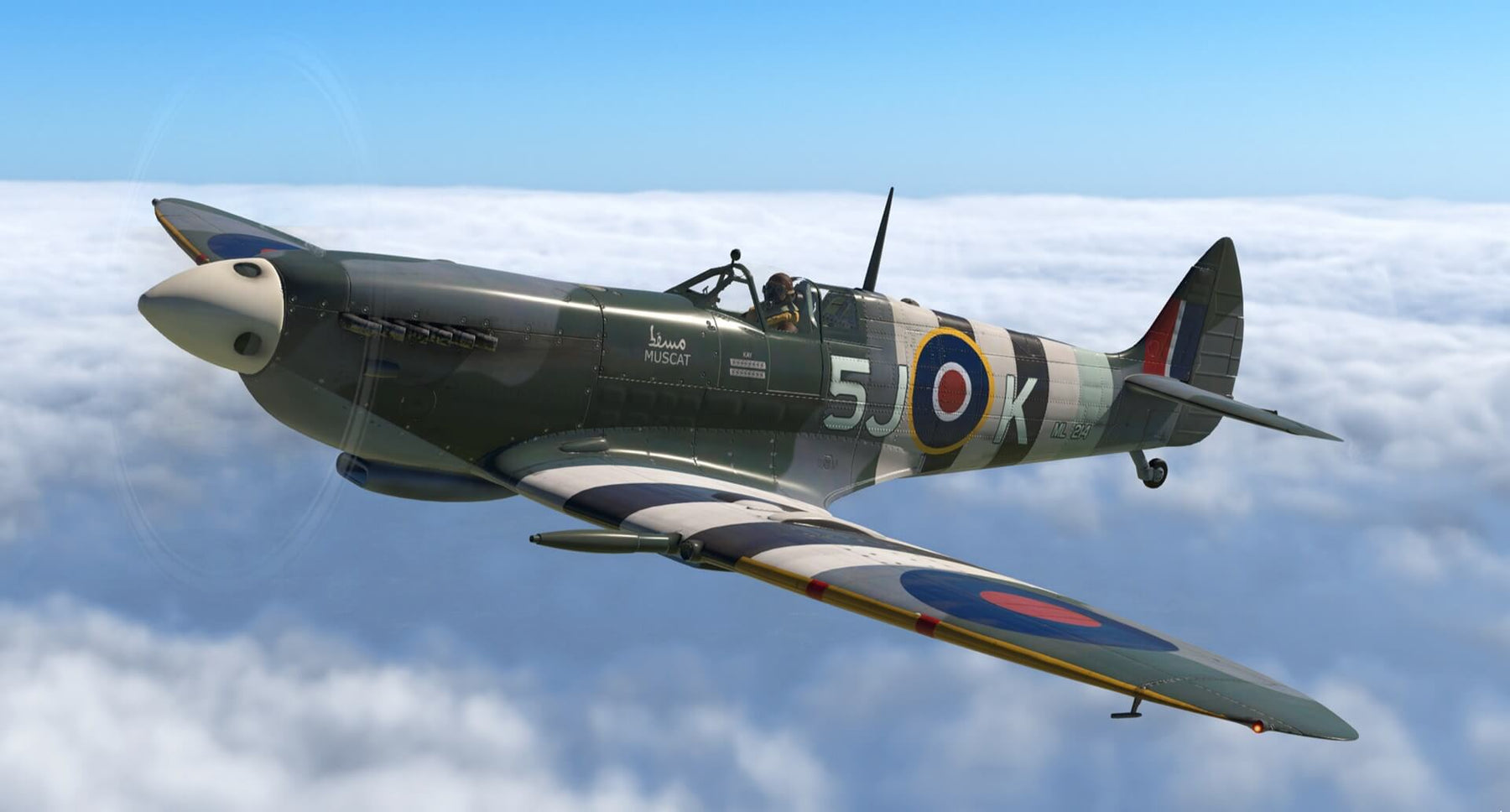
Despite the British Air Ministry's preference for biplane fighters in the early 1930s, Supermarine designer RJ Mitchell began work on an all-metal construction, single-engine, single-seat monoplane fighter with an enclosed cockpit and retractable landing gear. The Spitfire (Prototype K5054) made its first flight on March 5th 1936, and after demonstrating superb handling qualities, was ordered into mass production for the RAF. The first Spitfires entered service with No.19 Squadron at RAF Duxford in August 1938. Initially, the Mk I variant was equipped with type A wings and four wing-mounted Colt-Browning Mk II .303 (7.7mm) machine guns, although this was soon increased to eight. Further upgrades included the use of a Rolls-Royce Merlin III engine instead of the original 1030 HP Merlin II; the original two blade fixed pitch wooden propeller was also replaced with a metal, variable pitch three bladed propeller of either Rotol or De Havilland design. A bulged canopy, bullet proof windscreen, armour plating and hydraulics to operate the gear and flaps were also introduced, partly as a result of the combat experience gained by Hurricane squadrons during the Battle of France. The first Spitfires had a basic targeting system consisting of a ringed sight, but by July of 1939 a more sophisticated collimator sight, the GM2 Mk II, began to be used; machines already in service were retrofitted with the new sights. In 1940, 30 aircraft were delivered to front line service for Operational Trials with the new Type B wing; the Spitfire Mk IB was armed with two 20mm Hispano cannon and four 0.303 Browning machine guns, and the older eight gun fighters were re-designated the Mk IA. However, the drum feed for the 20mm cannon proved to be very unreliable and prone to jamming, so the Mk IB was withdrawn from service. At the time of its introduction, right through the Battle of Britain in the summer of 1940, the Spitfire Mk I was considered by many to be the greatest fighter aircraft in the world. By the time the Spitfire Mk II began to replace it, 1566 Mk Is had been built.
